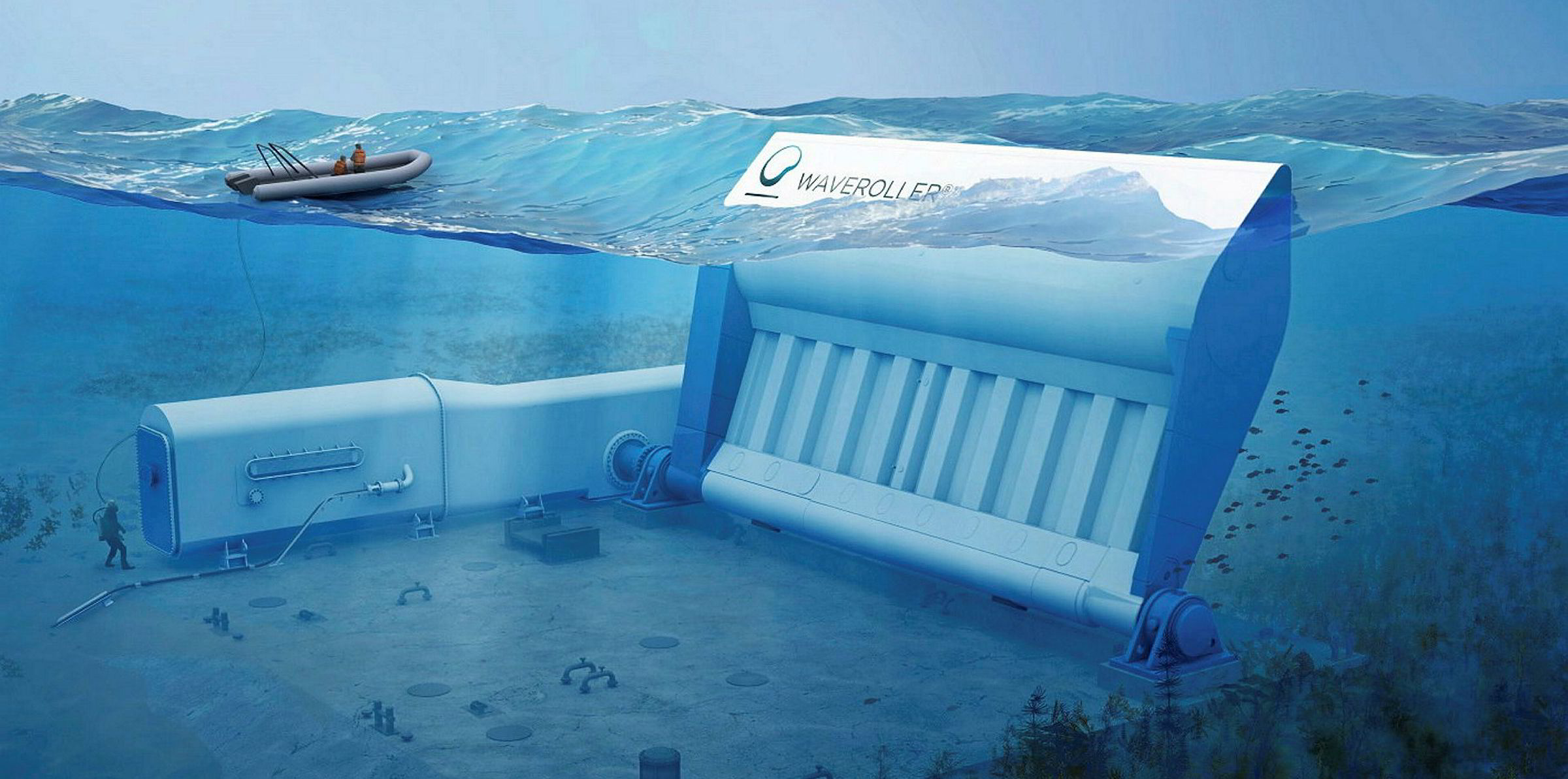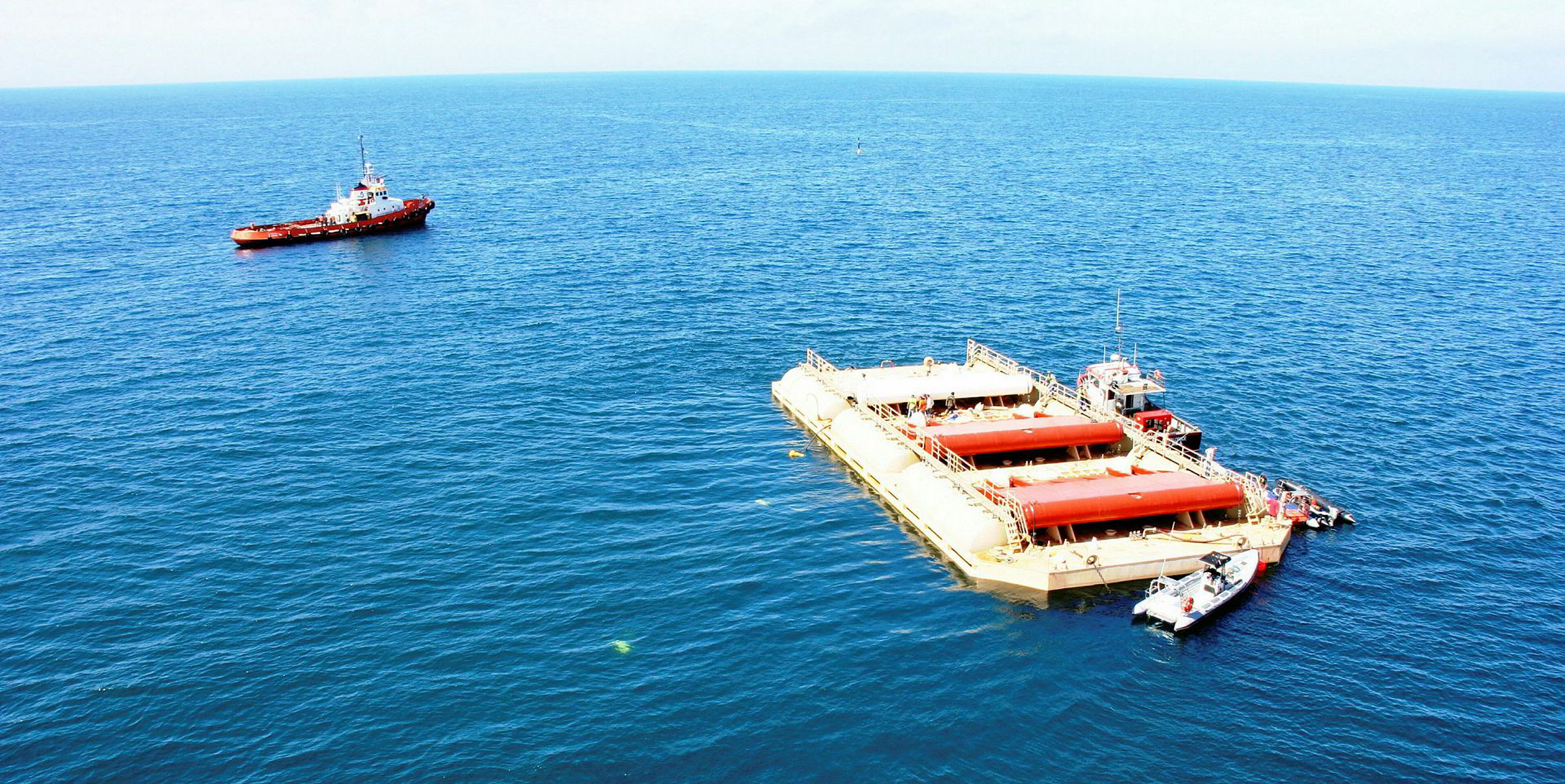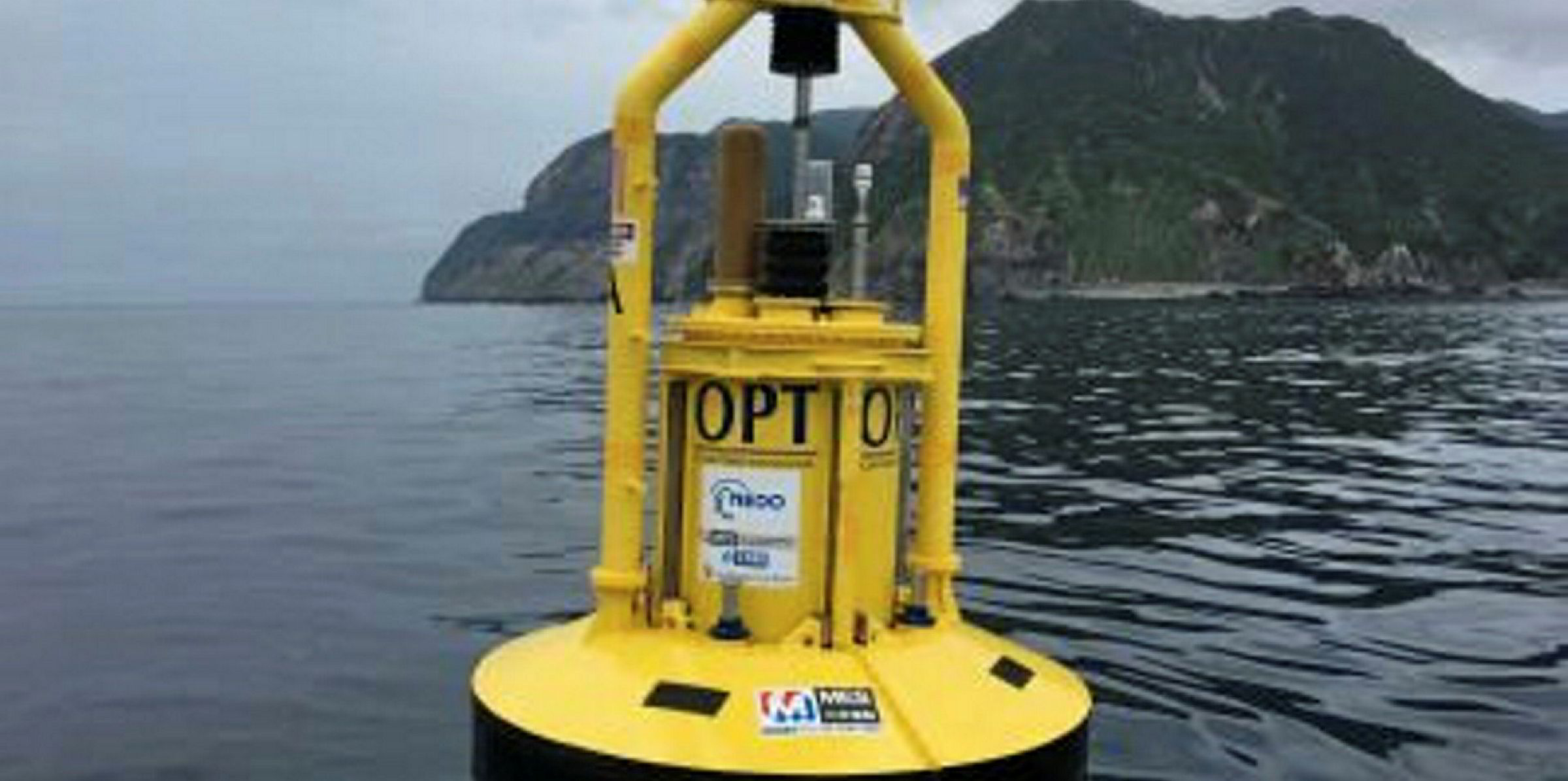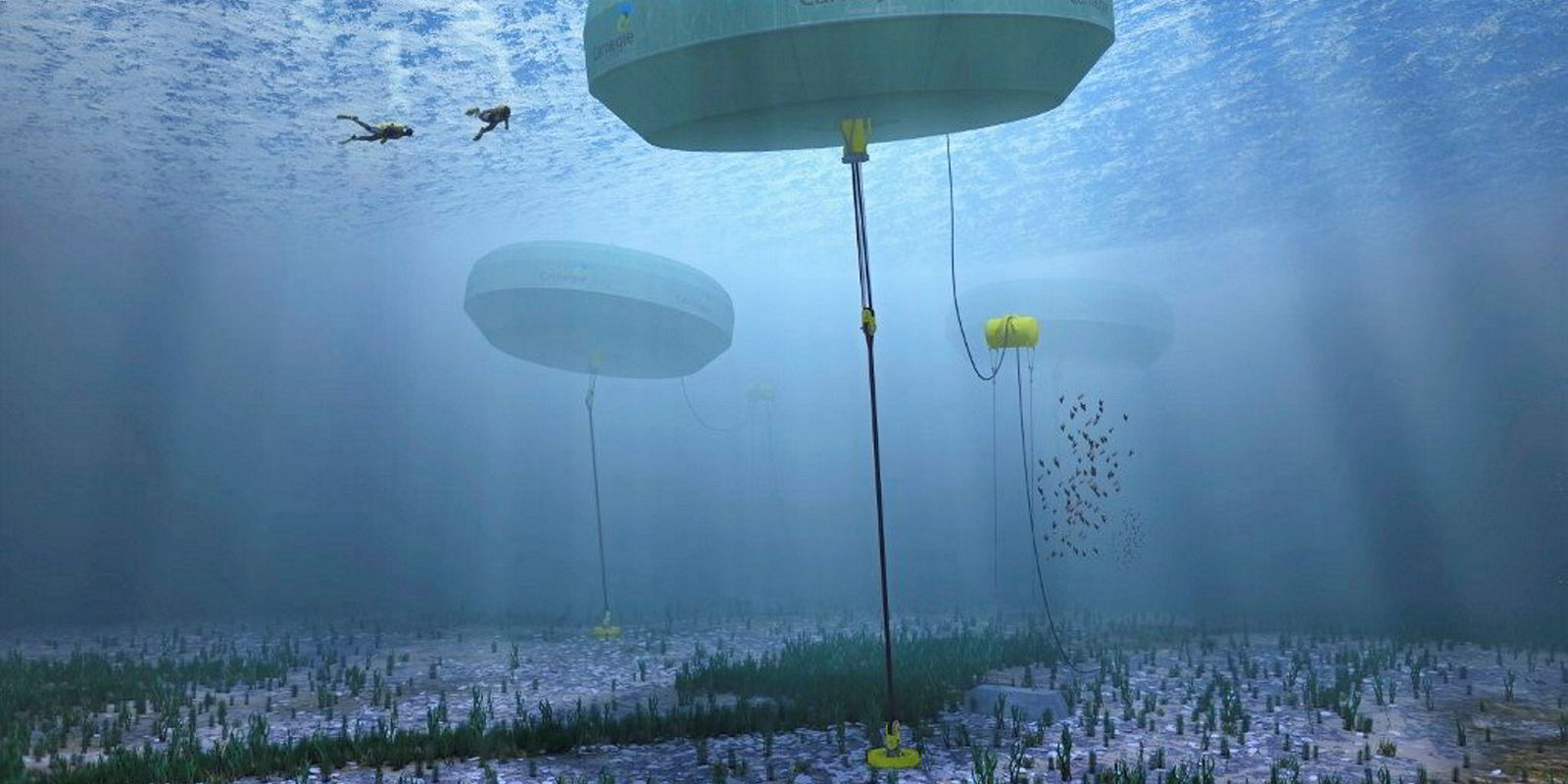In a recent Recharge article, Michael Liebreich was quoted as saying that wave power will never be competitive. While I have the utmost respect for Michael, I’m afraid that he is very wrong. Wave power does in fact have a bright future, and many of the assumptions on which he has based his argument are quite obviously incorrect and out of date — at least with regards to my company’s WaveRoller technology.
Contrary to Liebreich’s assumptions, WaveRoller is installed on the seabed some distance from the shore, so would not face Nimbyism issues; the power of the swell here is easily powerful enough to move WaveRoller’s energy-generating hinged panel, even in relatively calm seas; and the movement of the water here is not “chaotic”, it is in fact, orderly, highly predictable and largely unidirectional.
As I’m writing this, 1.4-metre-high swell waves are barrelling into Sennen Cove, southwest England, every nine seconds. Let’s use these as an example. They’re not particularly large, but enough for WaveRoller to supply the grid from beneath the waves. Thanks to exploiting a fortunate confluence of characteristics, WaveRoller technology is efficient, certified and set to be deployed in projects with positive returns. Its levelized cost of energy is already competitive with offshore wind, and in some locations, on a par with fossil-fuel plants.
Swell waves are a category of wave that’s been pushed along by winds far from the coastline, in this case far out in the North Atlantic. From up close, the surface of the water may look chaotic, but below the surface, in the heart of wave, the orbital movement of the water particles is much more ordered. In fact, the underlying phenomena is so well understood that both the next wave and the next week’s wave energy can be accurately predicted.
One of our investors recently described to me his own experience scuba diving in swell waves. As he tried to grab hold of rocks to steady himself on the sea floor he was dragged back and forth by the sheer power of this regular subsea mass movement of water. The potential is easy to appreciate once you’ve flung yourself into the midst of this environment, but not easily seen from the surface. One could think of the waves that we see from the surface as a by product of this regular underwater movement.
In the nearshore, at water depths less than 50 metres, the back and forth movement becomes even more pronounced — and this is why WaveRoller is so efficient, it taps into the beating heart of the wave. The panel is hinged at the seabed and is forced back and forth with the water. Let’s take for example today’s modest waves in Sennen Cove. The mass of water in these conditions moving our 18-metre-wide panel is about 360 tonnes. When submerged our panel is buoyant, easily moved by this mass of moving water and the torques are huge — even in these conditions the available wave torque is 650 tonne-metres.
Thus, even in modest wave conditions there is more than enough force in the subsurface swell to keep our panel moving and keep WaveRoller producing electricity. Swell waves have a number of other characteristics that WaveRoller exploits. As the swell reaches shallower water several things start to happen, first the wave period reduces and the wave speeds up, next the wave turns to travel perpendicular to the shoreline and then the wave breaks when its height is about three quarters of the depth. This gives us several advantages when designing the device — the back and forth motion is amplified, the directional spread of the waves is narrow, and the maximum wave height is limited. In other words the seabed filters out the big waves so that the ultimate design conditions are closer to the normal wave conditions, thus less material is invested into extreme events.
The structural integrity has been an important focus area, which we’ve invested heavily in. Our ultimate goal is technology that meets the insurance market’s requirements for business interruption insurance. We believe that this is a necessity. It provides assurance to project cashflows and facilitates cost-effective finance. One of the key criteria is third-party technology certification and a key component of that has been the validation of load calculations using instrumented sea trials. Our device was fitted with instrumentation, including numerous strain gauges, and deployed at a fully exposed test site off Portugal’s coast for the full array of weather conditions. This allowed us to verify the load cases, certify the design and now receive the manufacturing certificate from Lloyd’s Register.
But, being submerged also has other benefits. At our site in Portugal, the device is about 600 metres from the coastline, which means that the panel is virtually invisible from the beach and even with binoculars it’s difficult to spot from the shore. The surf school continued to use the beach in the summertime and the tourists seemed unaware of the installation. It’s further out than swimmers and surfers dare to venture. Thus, we have not experienced any of the Nimby pushback that, for example offshore wind has experienced; the local community has been very hospitable. Perhaps the local fishermen were initially the most skeptical, but in the end the artificial reef created by the device provided a habitat for fish that benefited the fishermen.
As a naval architect, I’ve often been surprised that this resource hasn’t been utilised sooner. After all, the oceans cover two thirds of the Earth’s surface. They continuously capture and store huge amounts of energy, which is then conveniently delivered to our shores. With WaveRoller we’ve iterated the design to intersect several natural phenomena that give an efficient solution. Thus, even in the lower wave conditions the forces acting on WaveRoller’s panel are enough to continue to deliver energy to the grid — which is often out of phase with wind and solar. These characteristics mean that there are locations where the existing electricity price leads to projects with a positive rate of return.
Thus, there are many compelling reasons to support my opinion that wave energy is competitive and will have a strong role in supporting the grid by complementing other forms of renewable-energy generation.
Christopher Ridgewell is chief executive of AW-Energy, the technology company behind the WaveRoller wave-power device




